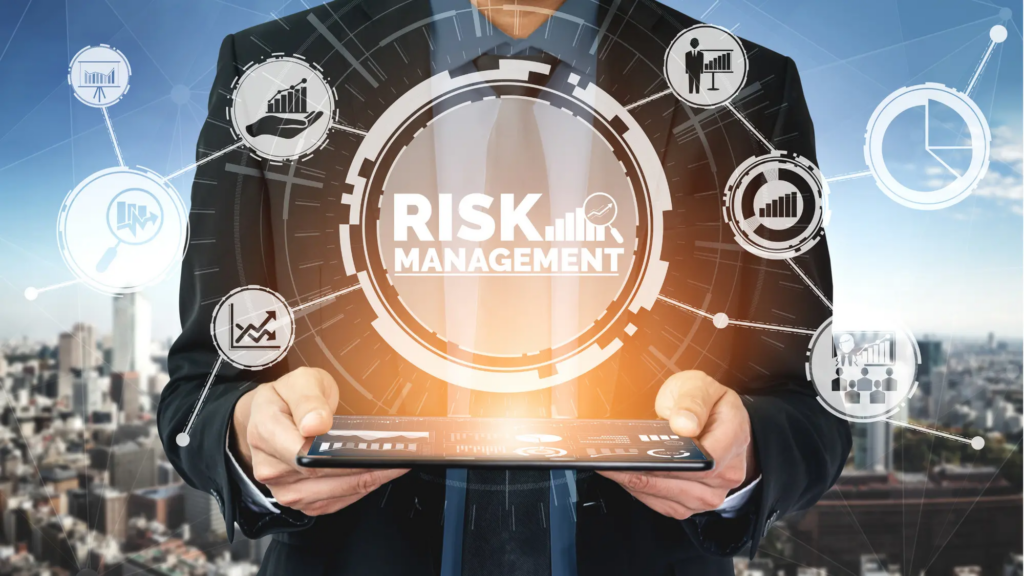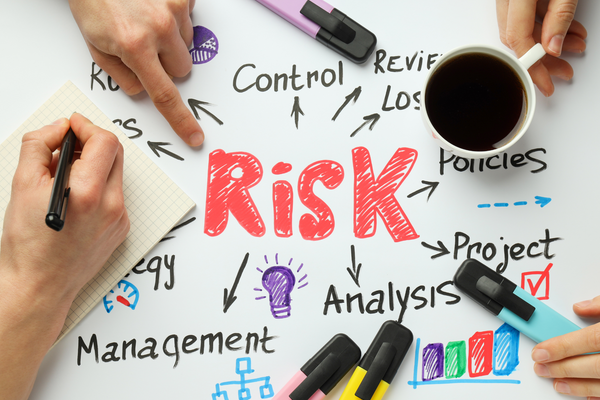
With over 70% of organizations experiencing data breaches caused by third parties, having a third-party risk assessment is crucial. A third-party risk assessment evaluates the security risk associated with third parties.
This risk assessment may be used to avoid data breaches and create onboarding frameworks. It’s also a requirement of many data privacy regulations and helps prevent data breaches.
With the evolving data landscape and stricter data privacy regulations, it’s crucial to understand why you need a third-party risk assessment, how it works, and what the best practices are to ensure more thorough risk audits.
Read on for more insights on third-party risk assessments and how to conduct one properly.
Conducting effective third-party risk assessments is paramount in 2025, given the intricate web of interconnected systems and the ever-evolving threat landscape. Here’s a breakdown of best practices and insights:
Key Trends and Considerations:
- Increased Regulatory Scrutiny:
- Expect heightened regulatory pressure on organizations to demonstrate robust third-party risk management programs.
- Regulations like the CPRA and similar state and international laws will drive the need for meticulous assessments.
- Emphasis on Continuous Monitoring:
- One-time assessments are no longer sufficient. Continuous monitoring of third-party vendors is essential to identify and address emerging risks in real time.
- Supply Chain Resilience:
- Organizations must assess the resilience of their supply chains, including the potential impact of disruptions caused by third-party failures.
- Cybersecurity Dominance:
- Cybersecurity risks will continue to be a primary focus of third-party risk assessments, with emphasis on data security, vulnerability management, and incident response capabilities.
- Automation and AI:
- The use of automation and artificial intelligence (AI) will become increasingly prevalent in third-party risk assessments, enabling organizations to streamline processes and improve accuracy.
Best Practices:
- Establish a Standardized Framework:
- Develop a consistent and repeatable risk assessment framework that aligns with your organization’s risk appetite and regulatory requirements.
- Maintain a Comprehensive Vendor Inventory:
- Create and maintain an accurate and up-to-date inventory of all third-party vendors, including their contact information, services provided, and risk profiles.
- Prioritize Risk-Based Assessments:
- Focus resources on assessing high-risk vendors that have access to sensitive data or critical systems.
- Utilize Security Questionnaires and Assessments:
- Employ standardized security questionnaires and assessments to evaluate vendor security controls and compliance.
- Conduct On-Site Audits (When Necessary):
- For high-risk vendors, consider conducting on-site audits to verify their security practices and controls.
- Review Contractual Agreements:
- Ensure that contracts with third-party vendors include clear data privacy and security requirements, as well as audit rights.
- Implement Continuous Monitoring:
- Utilize tools and technologies to continuously monitor vendor security posture and identify potential risks.
- Develop an Incident Response Plan:
- Establish a clear incident response plan that outlines the roles and responsibilities of both your organization and third-party vendors in the event of a data breach or security incident.
- Regularly Review and Update Assessments:
- Periodically review and update risk assessments to reflect changes in vendor relationships, security threats, and regulatory requirements.
- Foster Collaboration and Communication:
- Promote open communication and collaboration with third-party vendors to address identified risks and improve security posture.
By implementing these best practices, organizations can enhance their third-party risk management programs and mitigate potential risks in 2025 and beyond.
Help With Third Party Data Breach Risk Assessments
Third-party data breaches are on the rise, and risk assessments can help prevent data breaches caused by third parties.
Third-party risk assessments can help with vendor onboarding, data compliance, and risk management.
The risk assessment process includes identifying risk, creating a compliance framework, implementing the risk assessment, and risk reporting. Risk management tools can help you automate this process. Below we break it down soup to nuts for you and if you’d like an expert privacy contact to help you reach out to our team here at Captain Compliance.
Understanding Third-Party Risk Assessment

You’ve probably heard that data is the new gold in today’s information age. So, how do you protect this gold, especially if it’s data on your consumers?
To protect internal data, you’ll have data regulations, security protocols, and internal firewalls. But what about external data and data that third parties manage?
This is where third-party risk assessments come in. A TPRM audit helps protect your business data from breaches. It also ensures you follow risk-prevention protocols and are compliant with data privacy regulations.
Also, the average business has ties with 11 third parties, and you may get fined if any third party is involved in a data breach. Since you’re responsible for third-party data breaches, it only makes sense to do thorough risk assessments when working with these third parties.
Large third-party corporations may not get affected by fines in the millions. You most probably will.
Setting the Stage for Third-Party Risk Assessment in 2025
Unless you’re a large organization with the resources to integrate all supporting services into in-house departments, you won’t be able to run without third parties. Even the largest corporations rely on third parties for data processing, inventory management, marketing, and other business functions.
Most businesses currently work with around 11 third parties on average, and this number is rising with the advancement in technology and the increasing role of big data. But as the number of third-party vendors increases, so does the amount of risk.
Granted, you can’t always eliminate third-party risks, but you can choose vendors wisely, identify potential risks, and work with vendors to reduce the risk.
This is why it’s so important to do third-party risk assessments right.
Preparing for a Third-Party Risk Assessment in 2025
Before you can do a third-party risk assessment, you’ll need to define the parameters and objectives of the audit. Which third parties are included in the audit? What data are you auditing? Are you assessing risk based on data collection, storage, or other parameters?
By defining the scope of third-party risk assessments, you’ll get a clear picture of what resources you’ll need for a thorough audit.
The next part is to assemble a cross-functional assessment team of corporate compliance professionals. They will identify critical data systems and areas more susceptible to risk. This could be third-party payment processors, automated data storage systems, or any third party that has access to sensitive data.
It helps to consider your business’s accountability framework during this process as you’re laying the groundwork for other steps.
Vendor Selection and Due Diligence

Once you’ve laid the groundwork by identifying critical areas, you can start assessing the security practices of third parties. Here are some things that come under due diligence when selecting a third-party vendor:
The vendor’s history with data security.
Any current data security protocols they may be following.
Checking the risk ratings of your vendors.
Their compliance with data privacy regulations.
You can also check any documentation they have on data security. This includes incident response plans, security audits, and cybersecurity protocols.
It’s important to keep in mind that these processes are general and you’ll need a comprehensive framework to do accurate risk assessments.
Developing a Comprehensive Risk Assessment Framework
Due diligence is great, but it can only take you so far. Let’s say you’ve assessed the data breach history of a vendor, and their record comes clean. What guarantee do you have that the vendor is risk-free?
This is why you need a risk assessment framework.
A risk assessment framework ensures all third-party vendors are assessed on the same criteria. To create a risk assessment framework, follow these steps:
Identify risk categories – This could include operational, financial, reputational, or cybersecurity risks.
Link a criteria to the risk – If it’s a cybersecurity risk, you could add the criteria of following a certain cybersecurity protocol.
Create risk assessment questionnaires – These questionnaires can determine whether a third party follows risk management guidelines or not.
Create a customized risk profile – Once you have the information of the risk assessment from the questionnaires and risk criteria, you can create a risk profile for each third party.
Not all third parties require the same levels of risk assessments. If you’re working with a large vendor, you’ll need to conduct more intense assessments. However, they’re more likely to have readily available information.
Small vendors may carry less risk, but they usually have less information available, and you’ll have to do due diligence before working with them.
The Third-Party Risk Assessment Process
Once you have the framework ready, you can start conducting the risk assessment. It’s quite thorough, but if you have a data protection compliance service doing the audit, you shouldn’t face any issues.
A typical third-party risk assessment will mean implementing your risk framework. Simple, right?
Follow this checklist during the risk assessment process:
Establish communication channels with vendors. If you’ve dealt with customer support, you’ll know how big of a hassle this process is!
Review documentation such as risk policies, compliance certification, and data security protocol badges.
Conduct any questionnaires or surveys, if required.
Do proper data analysis and create a risk profile.
Your checklist may be different, but always ensure you cover these points. It’s not a complex process, but doing your due diligence may save you from non-compliance penalties!
Risk Mitigation and Remediation

Ok, so you’ve conducted a risk assessment and can’t find risk-free third-party vendors. It’s nothing strange!
Surveys show that 84% of businesses faced operations disruptions caused by third-party risk “misses”. However, you’ll never find the perfect business, so you’ll have to develop a risk mitigation and remediation plan.
When developing a risk remediation plan, always set a timeline for recovery. Some breaches may take hours to fix, while others may take weeks.
Sure, it may take months to recover from the reputational damage caused by data breaches, but your TPRM risk remediation plan should set a timeline for patching up the vulnerability and returning to normalcy.
Incorporating Risk Management into Vendor Contracts
You’re probably thinking, “Why do I have to do risk mitigation if the risk is from third parties?”, and you’re right. That’s why you’ll need to incorporate risk management into vendor contracts.
If you’ve outsourced compliance to data compliance professionals, they’ll help you create vendor contracts with thorough risk management. At Captain Compliance, we review all third-party vendor contracts in detail, ensuring you don’t have to bear any unnecessary risks.
This process involves reviewing contracts to ensure they’re aligned with your risk profiling and initial risk audits. For example, you may have a clause stating that any damage caused by information withheld by the vendor will be the vendor’s responsibility.
You can also define the terms for terminating the contract. For instance, you could terminate the contract if you’re affected by a breach caused by the third-party or if the vendor no longer follows certain guidelines for accreditation.
Article 82 of the GDPR places the responsibility of a data breach on the controller, so it’s crucial to ensure your third-party vendor contracts cover compliance requirements.
Continuous Monitoring and Ongoing Assessments
So, you’ve covered everything from risk assessment frameworks to contractual obligations. Does this mean all third-party risks are covered?
Not really.
Third-party risk management is a continuous process, and you’ll need to monitor continuously to ensure third-party vendors are aligned with your accountability framework.
This includes periodic risk audits, regular reviews of third-party vendor documentation, and taking a proactive approach to dealing with vendor risk. Even if the vendor gets penalized under data compliance regulations, your business may never recover from the reputational damage from a data breach.
Reporting and Communication
A recent survey by the Ponemon Institute showed that miscommunication between IT professionals and management on cybersecurity is a major cause of cybersecurity risk. And it’s not just management that needs to keep tabs on the risk assessments.
You’ll need to communicate the risk assessments to other stakeholders, shareholders, and even consumers. This goes both ways and it’s also important to have transparent communication with vendors.
Tips to Nurture Vendor Relationships
Clearly communicate your goals for managing data risk.
Create simple communication channels. Does the vendor have a customer support hotline? If not, they should at least have a time frame for responding to customer queries.
Do regular audits. You’ll be surprised at how many vendors have expired certification!
Always communicate KPIs in the vendor contract to avoid playing the blame game later on.
You’ll be surprised how simple communication helps mitigate risks that may otherwise cause reputational and financial damage!
Regulatory Compliance and Third-Party Risk Assessment

Third-party risk assessments are great for limiting the risks of data breaches, but they also have to be in line with data compliance regulations. The GDPR, CPRA, and other data privacy laws require businesses to do thorough risk audits before sharing consumer data with third-party vendors.
You may also have to document this process and ensure compliance frameworks are covered when creating vendor contracts.
This process is complex, especially if your business falls under several compliance regulations, so it’s best to outsource third-party audits to expert compliance services.
Leveraging Technology and Tools for Risk Assessment
The third-party risk management process can be intensive, which is why you should automate this process with risk management tools. These can help you automate risk frameworks, create digital questionnaires for risk assessment, and track incidents. Law firms like Almeida, Scott Ferrel’s Pacific Trial Attorneys, and Swigart Law in California are targeting business owners from healthcare to entertainment websites who have the Meta Pixel on their site and if they’re not using our software disclosing the use and getting consent then they are at risk of class action lawsuits that can be devastating to the business. Its not always the CCPA style suits but other arcane privacy laws like CIPA, VPPA, and a 1986 one called ECPA that are causing the litigation issues.
Some tools also have compliance monitoring and vendor profiling. These tools are more accurate than manual profiling, and they save you valuable time. If you have a premium tool like OneTrust, you can get AI integration for risk analysis and deeper assessments.
With the rise in AI tech, tools for assessing and managing third-party risk are becoming more sophisticated. So, if you’re doing manual risk analysis, it’s time to automate the process with a risk assessment tool.
Now We’re Ready To Start a Third Party Risk Assessment
With the rise in third-party data breaches, third-party risk assessments can help mitigate and manage data risks. However, businesses need to consider both internal requirements and compliance regulations in their risk assessments.
At Captain Compliance, we help businesses with detailed risk audits for smoother third-party onboarding. Check out our compliance solutions now!
FAQs
What are the 5 Phases of Third-Party Risk Management?
The five phases of third-party risk management include aligning third-party relationships with business goals, creating a risk assessment framework, implementing the process, ensuring compliance standards are met, and continuous improvement process.
What are the Best Practices for Risk Management?
Risk-management best practices include doing profiling, using automated tools for risk assessments, ensuring compliance standards are met, and keeping open communication channels with stakeholders and vendors.
Understand how to get third-party onboarding right.
What Does a Risk Assessment Tool Do?
A risk-assessment tool helps automate the risk-assessment process with comprehensive data audits, automated questionnaires, and smart reporting. Some AI-based tools can also do risk profiling for better analysis.
Are Risk Assessments a Compliance Requirement?
While not all data compliance regulations require risk assessments, you’ll find it hard to stay compliant without risk management. Some regulations, such as the GDPR, may require in-depth risk assessments before sharing data with third parties.